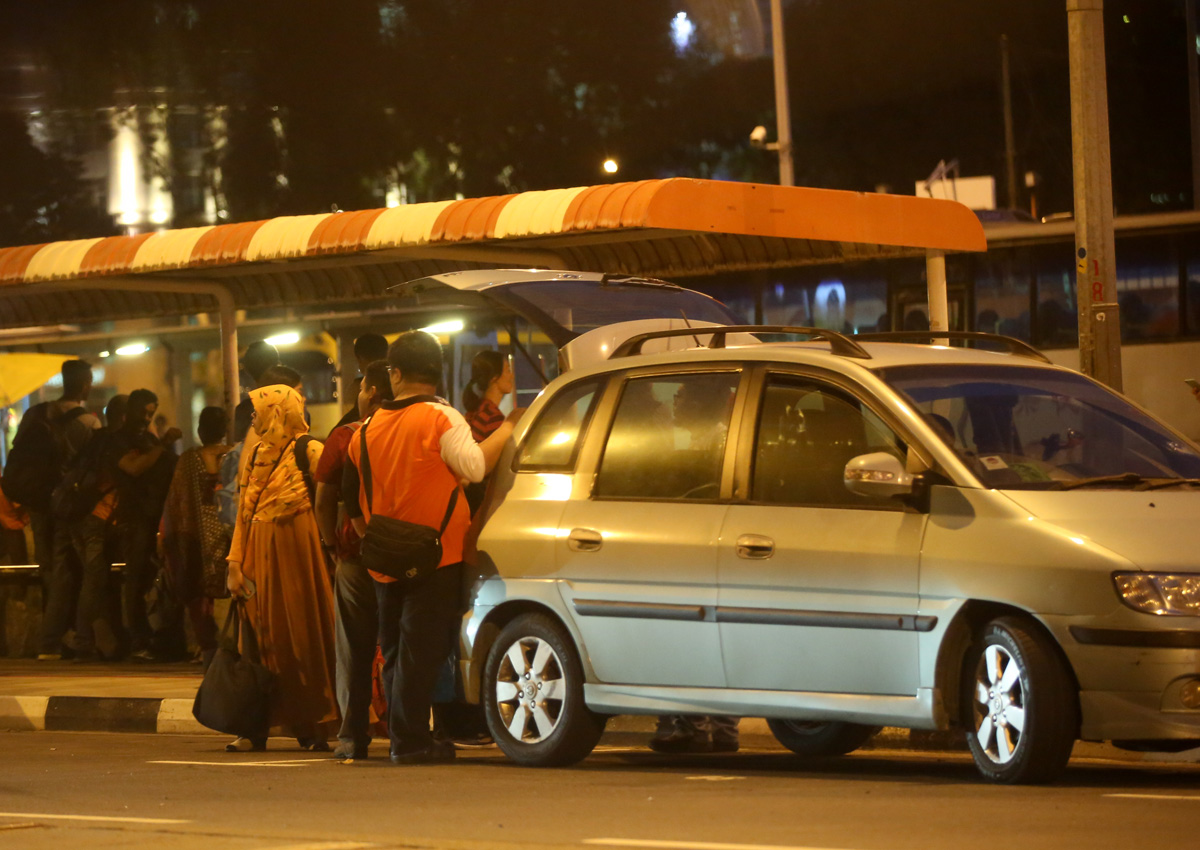Whether you are at City Square mall in Johor Baru (JB) or the Ban San Street terminal near Bugis on any evening, you might find yourself accosted by touts hawking taxi services to “Singapore? Singapore?” or “JB, JB?”.
After agreeing on a fee which can range from $10 to $30 per person, passengers are ushered into a car or multi-purpose vehicle (MPV), joining others to make the trip across the Causeway.
These informal – and illegal – cross-border taxis have been around for more than a decade but have proliferated in recent years, aided by technology and the spread of social media platforms.
A Straits Times check found at least 20 making use of apps like Facebook or WeChat to advertise and organise services. Mostly Malaysia-registered vehicles, some even provide on-call, door-to-door rides that pick up groups of 10 to 12 in Singapore and take them to tourist attractions in Johor like Legoland Malaysia.
The convenience of the unsanctioned services speaks volumes. Some have more than 10,000 page likes and receive a steady stream of inquiries.
Their growth has made licensed cross-border taxi drivers cry foul, even with rules being relaxed in 2012 to allow them to pick up and drop off passengers anywhere in their own countries.
Currently, there are 173 and 187 taxis from Singapore and Malaysia respectively that are licensed to ferry passengers across the border, according to the Land Transport Authority (LTA), with a total of 400 permits available. They charge fixed fares, with a trip from the Ban San Street terminal to JB’s Larkin bus terminal costing $48 per taxi, or RM80 (S$27) in the opposite direction.
A spokesman for the Singapore-Johore Taxi Operators’ Association, which represents Singapore taxis, said that profits for taxi drivers have plunged by 50 per cent from 2014 mostly because of the intense competition from illegal services.
“It is unfair because some of these drivers do not have to meet safety or insurance requirements. We’re losing our business to them because we can only drive our passengers to designated spots in the other country, while they go door-to-door,” said the spokesman, who asked for enforcement to be stepped up and for some relief to be provided in the form of financial subsidies.
The LTA said it issued warnings to four offenders for operating illegal taxi services from Ban San Street terminal in 2014, and prosecuted four last year for the same offence.
At the JB Sentral train station, JB City Square mall and the Ban San Street terminal last week, touts were active despite the signs warning against them.
The night before the Labour Day long weekend found at least five at the Ban San Street terminal within a two-hour window. They parked their Malaysia-registered vehicles along the intersection between Arab Street and Queen Street, and were seen driving passengers away after negotiating fares.
A Singaporean cross-border taxi driver, who wanted to be known only as Mr Tay, said it was difficult for the authorities to nab these operators. “The officers show up in uniform and the touts will disappear immediately when they see them,” said the 70-year-old.
He added that more illegal taxi operators now use minivans that can take seven to 10 passengers. “They say they are a credible business.”
An illegal Malaysian operator who wanted to be known only as Andrew, said he started offering taxi services in November 2014 when he noticed there was “good demand”.
Together with two partners, he operates two 10-seater Hyundai Starex MPVs and a Hyundai Elantra car between Singapore and Malaysia daily.
He admitted he was worried about getting caught. But the former insurance specialist, 29, continues to make about 20 trips a week, earning about RM$20,000 a month. Most of his customers are large families with young children and elderly members.
“It is more convenient for them as they don’t have to get off a bus and queue at immigration,” said Andrew.
Qigong therapist Eileen Chan, 58, agreed and said the unlicensed taxis are far more convenient, even if they are more expensive than a bus or sharing a licensed taxi. She paid $25 for a ride from JB to her home in Yishun in March when she was approached by a tout, and would consider using such a service again.
“It was getting late and taking the car through the checkpoint is much faster than if I take a bus,” she said. “Hopefully they can be regulated so that passengers can be given more options.”
The LTA said that any person caught using a foreign-registered motor vehicle as an unlicensed public service vehicle to convey passengers for hire and reward can be fined up to $3,000 and jailed up to six months. Vehicles used in the commission of such offences may also be forfeited.

This article was first published on May 6, 2016.
Get a copy of The Straits Times or go to straitstimes.com for more stories.






